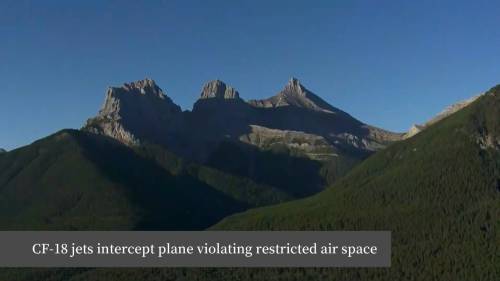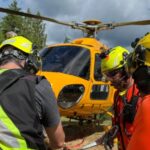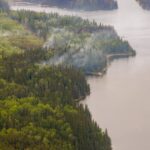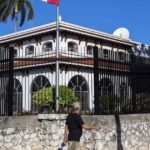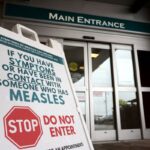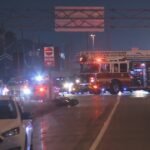The skies over Kananaskis Country became an unexpected theater of security operations yesterday when Canadian CF-18 fighter jets intercepted a civilian aircraft that had wandered into restricted airspace established for the G7 Summit. The dramatic mid-air encounter highlighted the rigorous security measures deployed to protect world leaders gathering in the picturesque Alberta region.
According to Royal Canadian Air Force officials, the civilian plane failed to respond to repeated radio communications before the military aircraft were scrambled to intercept. The NORAD-coordinated response occurred within minutes of detecting the unauthorized entry into the temporary flight restriction zone that extends approximately 110 kilometers around the summit venue.
“We maintain constant vigilance during high-security events like the G7,” said Major Catherine Williams of the Canadian Armed Forces. “The temporary restricted airspace is clearly communicated to all pilots, but occasionally we encounter aircraft that either miss these notifications or experience communication failures.”
The civilian pilot, whose identity has not been released, was escorted to a nearby airfield where they were met by RCMP officers. Preliminary reports suggest no malicious intent, pointing instead to a navigation error combined with possible radio equipment malfunction.
Security analysts note that such interceptions, while relatively rare in Canadian airspace, represent standard procedure during major international summits. The G7 gathering, which includes leaders from Canada, the United States, United Kingdom, France, Germany, Italy, and Japan, creates heightened security requirements across all domains – air, land, and cybersecurity.
“The response demonstrates the layered security approach Canada employs for these global events,” said Dr. Michael Byers, a professor of global politics and international law at the University of British Columbia. “From the perspective of summit security planners, every unidentified aircraft represents a potential threat that must be addressed promptly.”
The Department of National Defence confirmed that multiple CF-18s are stationed in the region throughout the summit, with pilots maintaining round-the-clock readiness to respond to any airspace violations. The fighter jets, capable of reaching speeds over 1,800 km/h, can intercept targets within minutes of receiving scramble orders.
This incident occurs amid broader security concerns surrounding the summit, which has drawn both world leaders and protesters to the region. Local authorities have established checkpoints throughout Kananaskis Country, while intelligence agencies monitor potential threats ranging from lone actors to organized protest groups.
For residents and visitors in the Kananaskis area, the temporary flight restrictions will remain in effect until the conclusion of the summit. Pilots planning routes anywhere near the region are strongly advised to check NOTAMs (Notice to Air Missions) and contact air traffic control for guidance on navigating around the restricted zone.
As world leaders continue their discussions on pressing global issues ranging from climate change to international security, this aerial interception serves as a reminder of the complex security apparatus operating largely out of public view. The incident resolved without escalation demonstrates the effectiveness of Canada’s summit security protocols, but raises an important question: In an era of increasing security demands, how do we balance the necessity of protecting world leaders with maintaining the openness that defines Canadian society?

